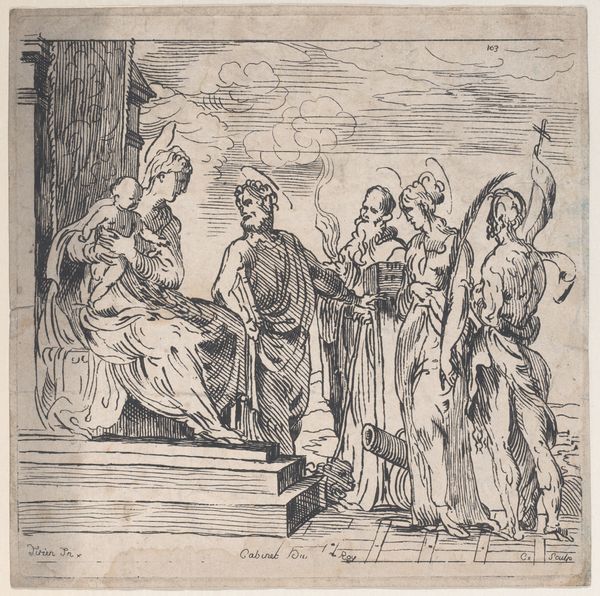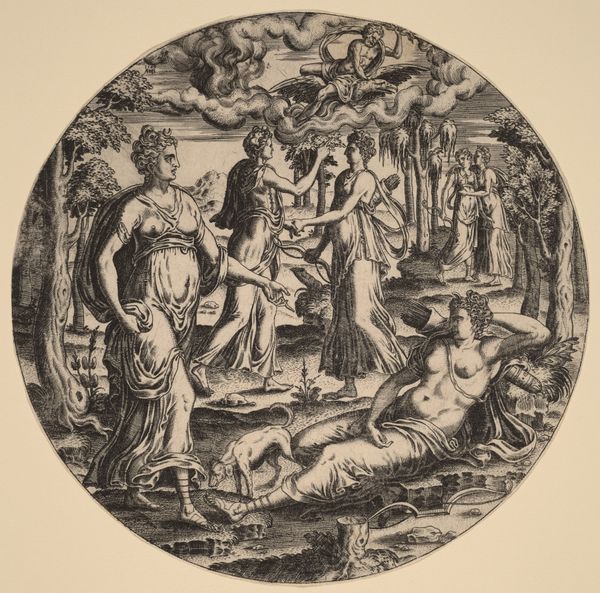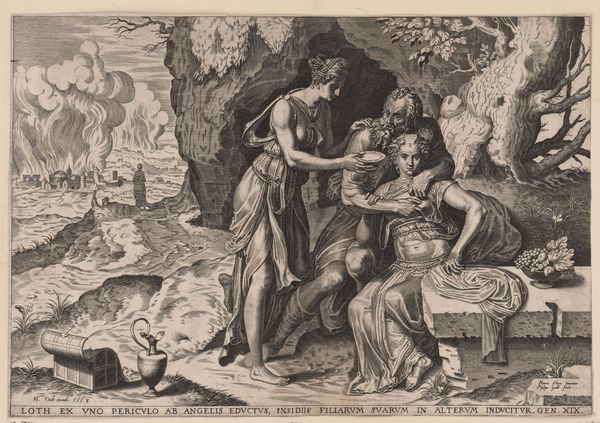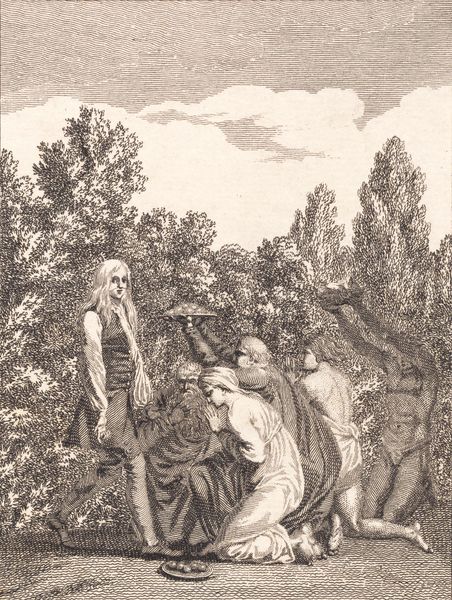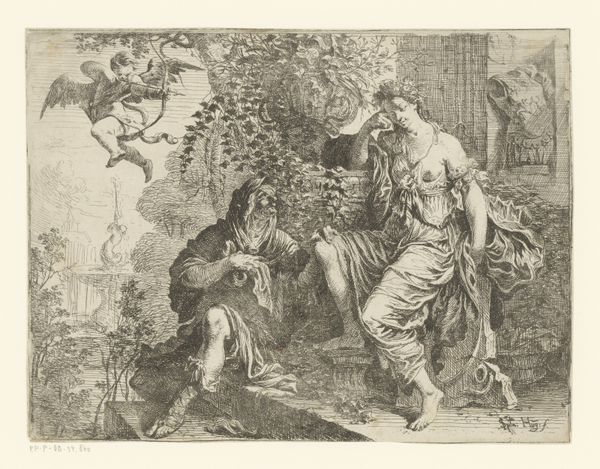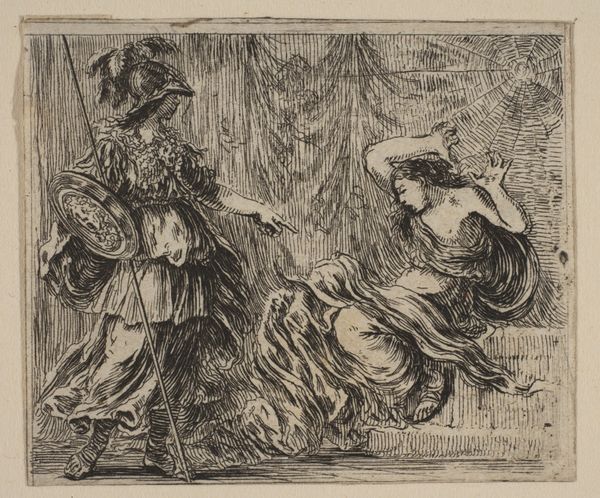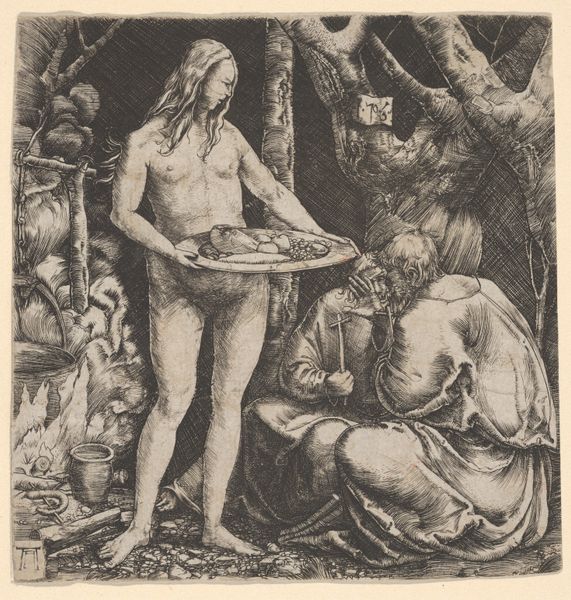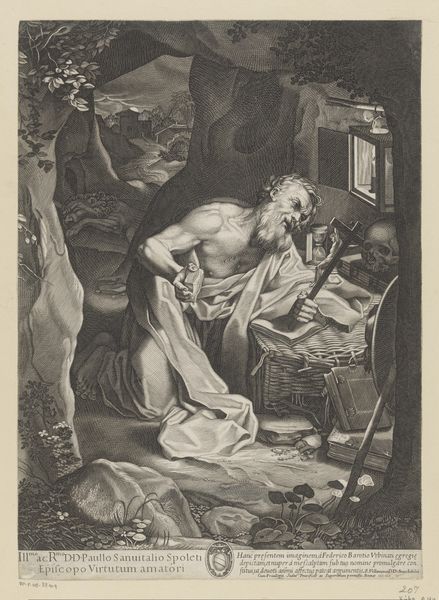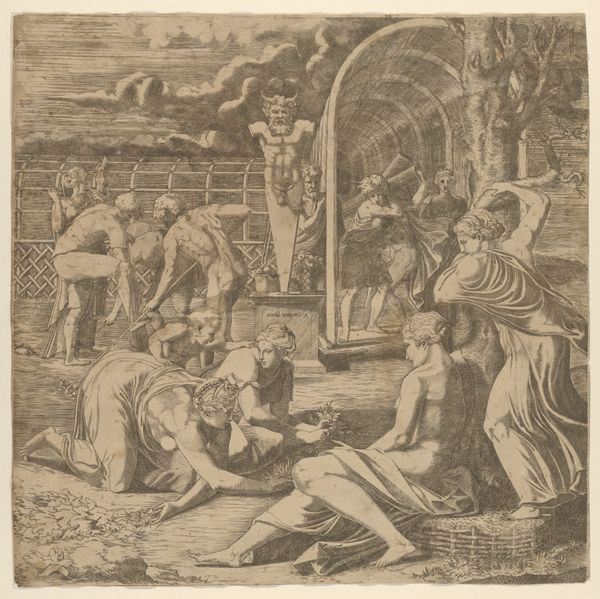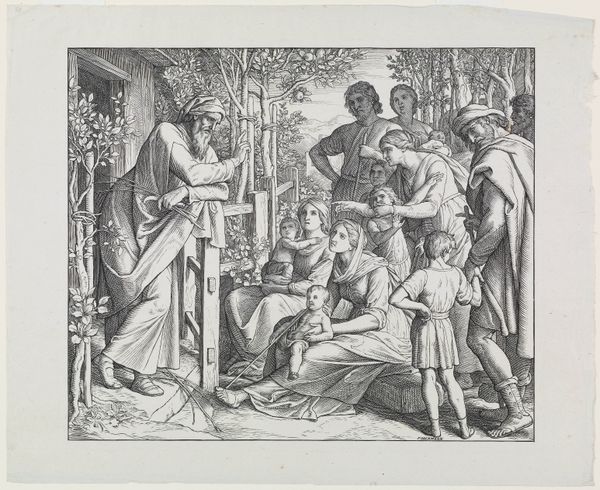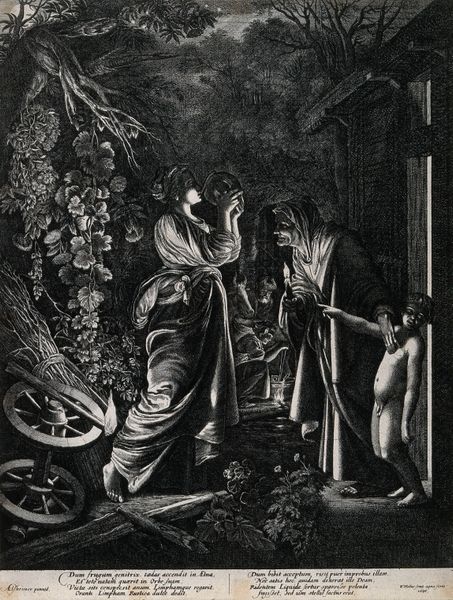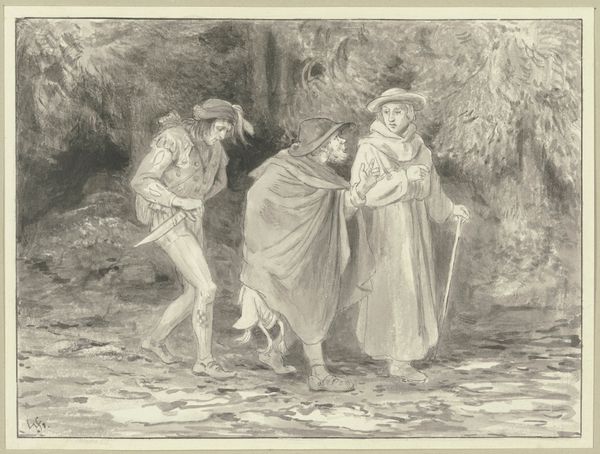
Joseph's Coat, from "Dalziels' Bible Gallery" 1864 - 1881
0:00
0:00
drawing, print, engraving
#
drawing
#
narrative-art
# print
#
figuration
#
history-painting
#
engraving
Dimensions: Image: 6 15/16 × 6 3/4 in. (17.7 × 17.2 cm) India sheet: 9 5/16 × 8 13/16 in. (23.7 × 22.4 cm) Mount: 16 7/16 in. × 12 15/16 in. (41.8 × 32.8 cm)
Copyright: Public Domain
Editor: We’re looking at Ford Madox Brown’s engraving, “Joseph’s Coat, from 'Dalziels' Bible Gallery',” created sometime between 1864 and 1881. It’s such an intricate print! All of these figures gathered together—they seem to convey a mood of anticipation, perhaps laced with some sort of tension. What do you see in this piece? Curator: The tension you perceive is crucial. Brown, working within the Pre-Raphaelite movement, was deeply invested in narrative and historical accuracy, but also, significantly, with challenging social hierarchies. Consider the power dynamics visualized here: the aged Jacob, the favored son playing music at his feet, contrasted with the older brothers, who seem almost like spectators. What power structures might Brown be critiquing here? Editor: You’re right, the brothers do seem very separate from the inner circle. The class differences? Is Brown trying to draw attention to social stratification through the biblical narrative? Curator: Precisely! And it’s not simply class, but patriarchy itself. Note how Joseph, presented almost androgynously, is placed in a subservient position, reinforcing his dependence on Jacob's patriarchal power. Brown uses this Biblical scene to explore gendered and familial power imbalances relevant to his Victorian context. What does it say to you? Editor: It's really insightful to see how Brown layers social commentary onto this well-known story. It makes me reconsider the artwork’s significance in a new light. Thank you. Curator: It’s vital to remember that art never exists in a vacuum; it's always engaged in dialogue with its cultural context. And by asking those critical questions, we can use it to learn about the past and even understand how those structures repeat themselves.
Comments
No comments
Be the first to comment and join the conversation on the ultimate creative platform.
